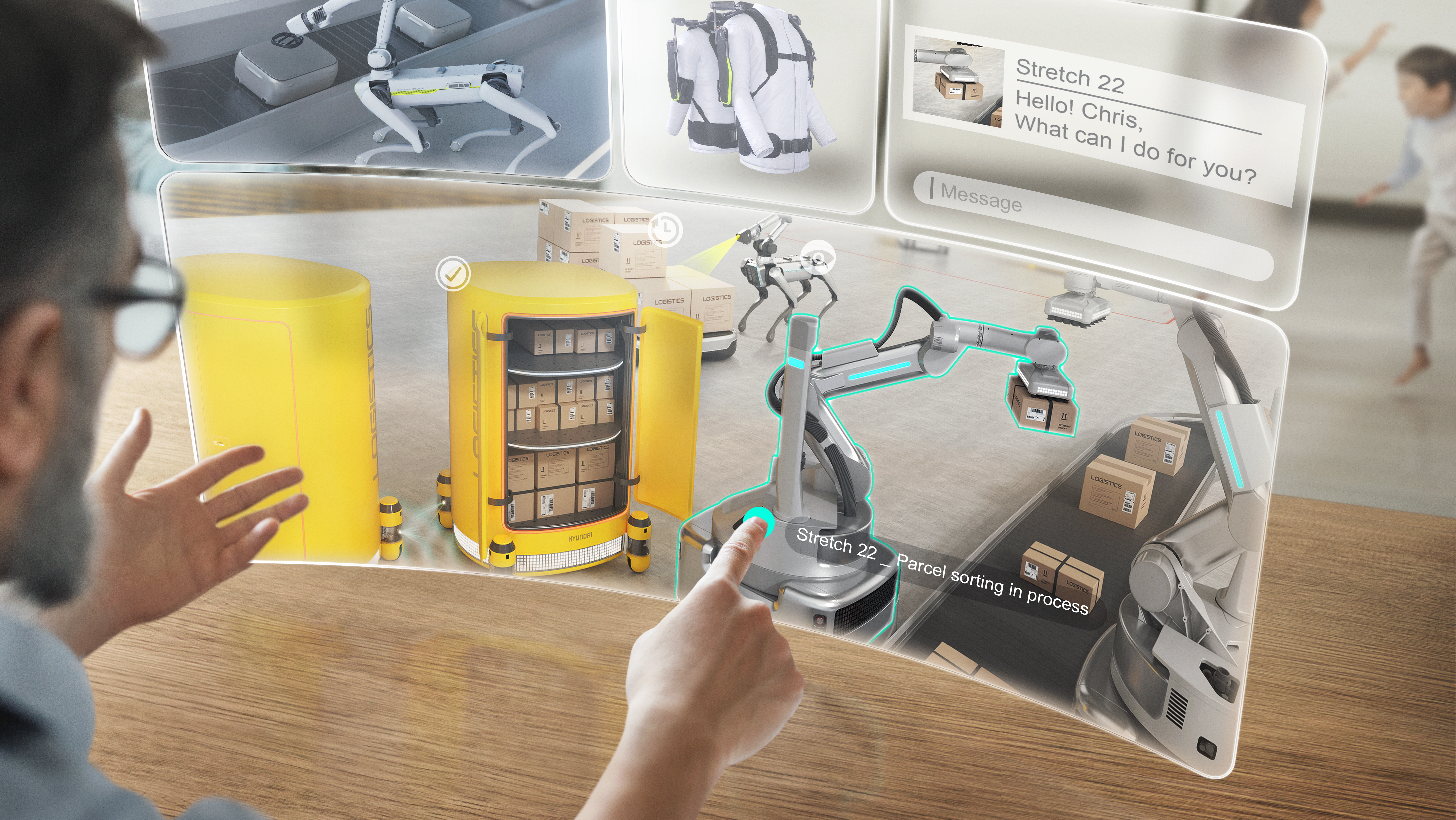One thing’s for certain: Hyundai has some grand ambitions for its robotics development. And thus far, the automaker has been willing to put its money where its mouth is, most notably in the form of its acquisition of Boston Dynamics, which valued the robotics pioneer at north of $1 billion.
Robotics are, predictably, taking center stage with the company’s CES presentation this week. Last month, Hyundai offered a sneak preview in the form of the Mobile Eccentric Droid, a four-wheel modular mobility platform. Today, the company outlined broader plans for the future with its new “metamobility” concept.
Hyundai will be revealing more information about its strategy, and we’ll be speaking to some executives to get a better idea of what it might look like in practice. For now, the broad idea was presented under the banner of “Expanding Human Reach,” which aims to find a role for mobility and robotics in a virtual reality metaverse. It’s hard to separate the buzzwords from the practical implications at this early stage, but a primary component seems to be the use of hardware to serve as a kind of real-world proxy for VR interactions.

Image Credits: Hyundai
For now, let’s just say there are a lot of big promises surrounding a lack of tangibility that has long been a root problem for VR applications. Here’s Hyundai Motor Group President Chang Song:
The idea behind Metamobility is that space, time and distance will all become irrelevant. By connecting robots to the metaverse, we will be able to move freely between both the real world and virtual reality. Going one step further from the immersive ‘be there’ proxy experience that the metaverse provides, robots will become an extension of our own physical senses, allowing us to reshape and enrich our daily lives with Metamobility.
A near-term, plausible use for such technology is using remote teleoperations to control a manufacturing robot. That’s something that Toyota has long been exploring with its T-HR3 system. The company notes that Microsoft Cloud for Manufacturing could serve as a gateway for such remote-controlled work — and it’s not too difficult to imagine a system like this serving some practical functionality.

Image Credits: Hyundai
Other applications are a fair bit further out. “For example,” writes Hyundai in a press release, “when a user accesses a digital twin of their home in the metaverse while away from their physical home, they will be able to feed and hug a pet in Korea through the use of an avatar robot. This will allow users to enjoy real world experiences through VR.”
Such notions appear to be largely conceptual at the moment, though Hyundai is offering demos of what they might eventually look like in-person at CES this week. Given the number of people currently attending the show virtually (TechCrunch included) amid the most recent COVID surge, it is, at the very least, easy to imagine how remote operations could prove useful down the road.
Bringing robotics to inanimate objects, transit
Hyundai didn’t spend all of its time in the metaverse at CES. The company also introduced a concept branded “New Mobility of Things” that will use robotics to move inanimate objects — big and small — autonomously.
Under this New Mobility of Things concept is a product called Plug & Drive, or PnD. This single wheel unit has intelligent steering, braking, in-wheel electric drive and suspension hardware as well as lidar and camera sensors that let it detect objects and navigate around them.
These PnD modules are designed to attach to objects like tables in an office, for instance. The user might command the table to move closer to them or to schedule that table to move at a certain time when more space in the office is needed.
“The PnD Module is adaptive and expandable to match human needs. Because in the world to come, you won’t move your things — they will move around you,” Dong Jin Hyun, the vice president and head of Hyundai’s robotics lab, said. “PnD makes normally inanimate objects mobile. It’s this ability that makes changing practically any space possible. It’s a way to configure spaces on demand.”
Hyundai showcased a number of applications for the PnD, including a personal transport system that could ferry an individual to a waiting bus. This pod, which is equipped with four 5.5-inch PnD modules, would then attach itself to this “mother shuttle.”

Image Credits: Hyundai
Theoretically, the bus would stop and the pod (the human sitting inside) would continue on for that last mile to their destination.
That idea, which Hyundai showed in a video that depicted an elderly woman whose cane was delivered to her via a single PnD before she climbed into the pod and zipped off to an awaiting bus, is targeted directly to an aging population. However, it could be used — if it ever becomes a reality — to provide first- and last-mile public transit without adding a lot of single-occupant large cars to roadways.
Hyundai also showed off another concept called “Drive & Lift” (or DnL), a module designed to lift objects. Hyundai combined the DnL with its Mobile Eccentric Droid (MobED) robot. The DnL is mounted on each wheel of the ModED, allowing it to lift up and down, keeping it level even as the robot traverses uneven terrain or low barriers such as steps or speed bumps.
Credit: Source link






















